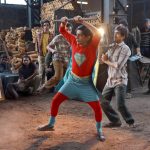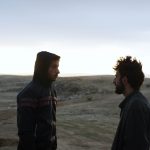A Conversation with Carson Lund (EEPHUS)
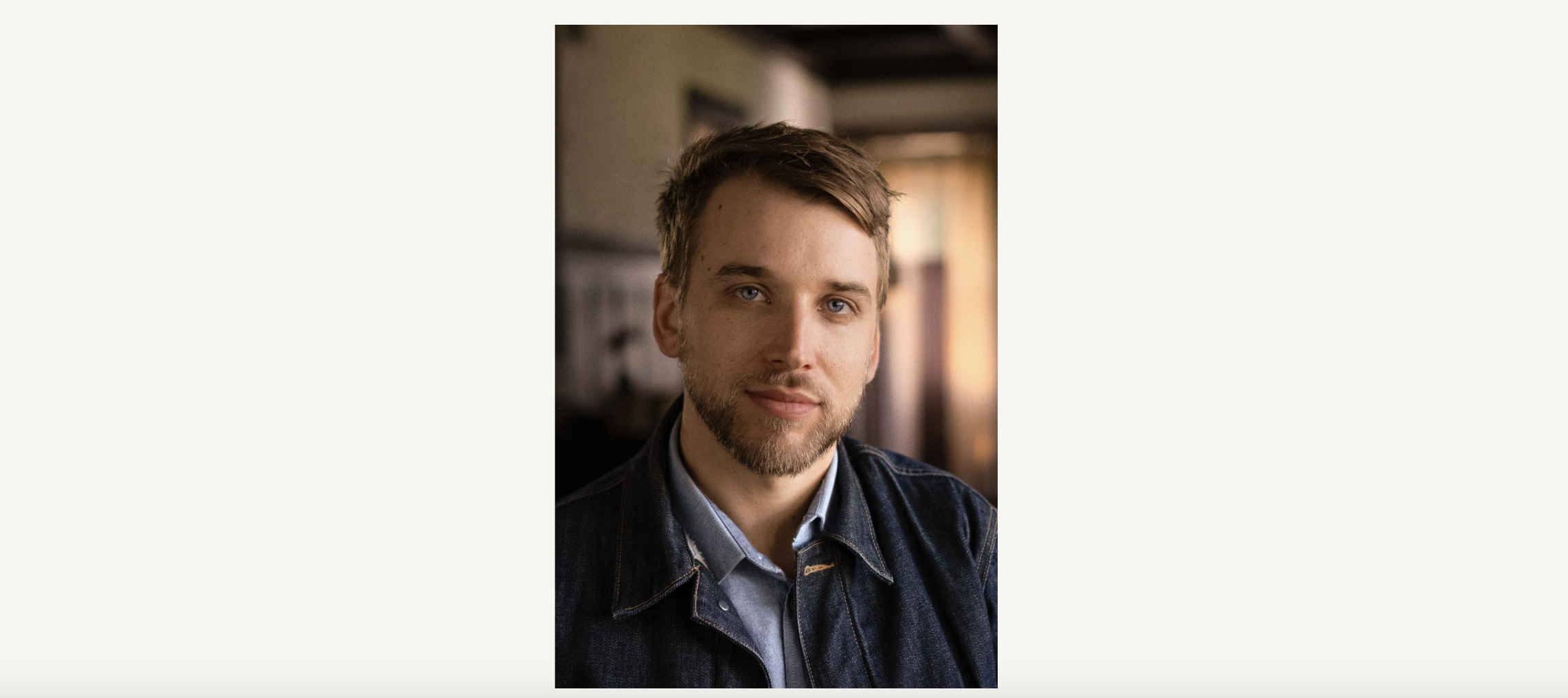
Carson Lund’s directorial debut Eephus arrives like a rare, carefully crafted pitch – deceptively simple yet loaded with unexpected depth and movement. Set during a final game between two New England recreational baseball teams whose beloved field faces imminent destruction, the film transforms a lazy afternoon of baseball into a profound meditation on male friendship, community, and the relentless passage of time. With its languid pacing that mirrors baseball’s own rhythms and a richly textured ensemble cast headlined by former Red Sox pitcher Bill “Spaceman” Lee and legendary documentarian Frederick Wiseman, Lund has created what he calls a “hangout film” that’s less about the game itself than “the possibilities opened up by the game: of escape, of camaraderie, and of a deeper, more serene sense of time passing.”
A New Hampshire native who left the East Coast for Los Angeles, Lund brings both insider knowledge and thoughtful distance to his portrayal of New England masculinity. Having already established himself as a cinematographer (including on Christmas Eve in Miller’s Point, which also premiered at Cannes’ Directors’ Fortnight alongside Eephus) and film critic, Lund draws inspiration from sources as diverse as Robert Altman’s ensemble works and experimental filmmakers Peter Hutton and James Benning to craft a film that’s simultaneously specific and universal. Set deliberately in what Lund calls “the last hurrah of a pre-digital world,” the film’s 1990s setting allows his characters to exist in a moment of pure presence. The following conversation was edited for length and clarity.
Hammer To Nail: The film is rooted in two very specific elements – baseball and New England. How did growing up in New Hampshire shape your understanding of both the sport and the particular brand of stoic masculinity we see in the film?
Carson Lund: Oh man. You gotta psychoanalyze to get there. I live in Los Angeles now. It’s about as far as I could in the United States from where I am from. I did not leave because I was sick of it or anything. It is just where my life took me. The distance has made the heart grow fonder. I love New Hampshire and It made me want to tell stories about it. I see it in social situations where I feel like I have a different understanding of life than someone who is from LA or anywhere else. I realized over time that it is so rooted in where I am from.
The seasonality of New Hampshire was affecting. It is a place with 4 very different seasons. Baseball was always something that was so important to me but could only be played in the summer or a little bit of the fall. Fall ball had a very precious quality to it because it was this thing everyone loves, you only get a few weeks of it and you watch as things get colder and the days get shorter. You know ahead of you is 4 months of frozen weather. I would play on turf or at batting cages to stay in touch with the game but it was never the same. I grew up with it. It was so a part of my everyday life. The kind of people that play it, the archetypes that gravitate towards it, the people who define their personalities around the game, and always, there’s this sense that the competition and bettering yourself on the field was the most important thing. That’s what alienated me from the game initially, eventually, when I came to California that’s what brought me back. The whole attitude of bonding through competition, trying to lift people up through insults, putting each other down. It’s a very unique way that men in New England relate. Maybe it’s not regional but it is a quality of the Region. The cold weather is definitely a part of it.
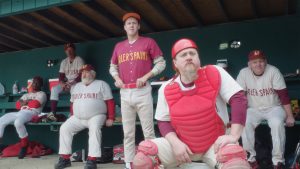
A still from EEPHUS
There is a sort of inability outside of sporting communities for people to express their emotions. I wanted to make a film that explored that as a way to understand myself even more. I am a man who is afflicted by similar qualities. When I came to LA and joined a rec league, the whole attitude towards the game was different. I think that is a product of playing with people who are older. They are over the hump of ambitions within the sport, but I also think its the region and its warm weather. The fact that you can play all year round. There was a lighter and more playful quality to it than I recall. I remember watching my dad play in his rec league and thinking his teammates and my teammates shared the same qualities. The language in New England, from the outside, can seem very cruel. I think it comes from a place of affection. We just express our affection through competitive banter, insults, complaints and that sort of thing, so we tried to infuse that in the dialogue.
HTN: The film is set in the 1990s, which you describe as “the last hurrah of a pre-digital world.” Beyond period authenticity, how did this setting serve the larger themes about community and connection?
CL: I might be fuzzy on the exact details of when devices were intended and became a part of our vernacular, however, what it feels like to me is that the minute I got into college everything changed and the phone became the thing. My time growing up in New Hampshire, I was not wedded to my phone or any devices. I felt like I was forming bonds with people through in person activities like spending time in parks, exploring my town, going to the movies, just generally common spaces where people convened. It’s not that those spaces are entirely gone, but they are certainly diminishing in America.
When there is not a way for someone to make money off a certain thing those places start to disappear, I noticed. There was such an emphasis on the importance of getting together and doing an activity with like minded people in my town. I wanted to set it in this era because everyone who is there, is there for one reason. None of them are distracted. The point is to be present and escape whatever is happening outside of that field. Nowadays, if you play a rec league baseball game, there are people checking their phone throughout to deal with things outside of the field. In the 90s that was not the case, everyone had to be very present. I wanted to make this about being rooted in your body and the space you are in. That is why I set it in this pre digital era. I did not want to fetishize it. There is no dialogue regarding events at that time. It’s more about the existential feeling about connectedness…present tense.
HTN: Those feelings are often communicated through the terrific sound design. Music plays a significant role, from Tom Waits, to original compositions. Can you talk about crafting the soundtrack to match what you call the “unpredictable rhythms of baseball?”
CL: Originally I did not want to have any score. I thought the sounds of the game would be sufficient to create enough cacophony and texture. That is still there, all those sounds coming from different sides of the auditorium. If you see it in a theater that is. I got into the edit and realized there needed to be a contrapuntal element. Something coming from outside the film. In a way, the villain of the film is time itself. That becomes personified by balls disappearing and so forth. I wanted the score to be an element of that. This inevitability of doom hanging over others. As we got into the edit I realized we needed something, but it could not be too melodic, I wanted it to allude to military drums because the field they are playing on is called Soldier Field and I see these characters as soldiers against time. I did not want standard, rhythmic percussion. It has this off kilter syncopation. To your point about baseball being a game with peculiar rhythms. It has a lot of downtime and then spikes of activity. I wanted the tempo of the drum beat to allude to that.
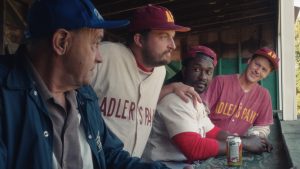
A still from EEPHUS
That is just the score though. There is the whole element of the players bringing the music to the field. It’s one of the few examples of the characters bringing the outside world in. It is a way to create a soundtrack. It creates meaning for them. It builds the texture of the soundscape and makes it more entertaining. I did the score with my brother. We have been in a lot of bands together. We did not have a music budget or anything. We have such a vault of music that will never see the light of day, that we were able to pull from. Glenn Murrary (Peter Minkarah), the character who brings the boombox, he is a good friend of mine from my home town and is a hip-hop artist himself. His music is very much rooted in 90s hip-hop so that felt appropriate. I was also able to source from some of my friends’ music to fill out the soundscape. Sometimes, whatever is coming out of the boombox almost functions as a score. I did not want to overload the film with the score
HTN: I love two moments in this film that are sequential. One with Cliff Blake where one of the players thanks him. He says, “I don’t need the thanks but it was a good time.” Simple but powerful moment. Shortly after with the beer drinking pitcher of the Riverdogs and his catcher. He tells him how much of a pleasure it has been pitching to him. The catcher responds that he does not know if he will catch again. The pitcher responds “Don’t say that man, you gotta get back out there and make the next pitcher feel safe.” What was your thinking here?
CL: These guys are very grateful for having been a part of it. Even though by the end of the film they are very hung up on the demise of the whole thing. Instead of thinking about ways to save this community, they are talking about it as if it already happened. There is a certain defeatism to that. Instead of maybe driving 30 minutes away and doing it, it’s done forever. Let’s just reflect on what happened. The good times. The characters Franny and the Pitcher are in a small handful of characters in the film that have a childlike perspective. They actually see the value in this moment and extend it, perhaps beyond what we see on screen. A lot of these characters are very petty and hung up on the end. Franny feels an immense sense of gratitude for having been a part of it at all, and the pitcher sees his own obsolescence and is trying to tell the younger character that there is more to life. These are two instances of characters trying to grapple with the complexity of what they are experiencing. They still grapple with crutches like avoiding the truth or speaking in platitudes.
HTN: The film seems particularly interested in what you call “the ritualistic space for reflection and leisure” that recreational sports provide. How did you work to capture those in-between moments when the game itself becomes secondary to the space it creates?
CL: The film was written as a box score originally. Alongside us writing the script we were developing this box score. We looked at the film top down as basically a bunch of units of time. Outs, innings, different times of day, high noon, late afternoon. We had these ways of breaking up time. Not to say it became a mathematical exercise, however, when we approached it that way of, “ok, there are 27 outs in a game how much time does that give us,” it allowed us to feel like we were approaching an equitable distribution of attention. That is not the only purpose, but it felt very appropriate for a story about space itself. The landscape is its own story here.
The collective that occupies this landscape is just a group of people passing through it ultimately. The logic is where the camera moves. We thought, “we have not been in that corner in a while, or over by that tree,” etc. The pizza truck character is only in the film because that is what happened to roll by. The space is a stage, things come and go and it was our job to balance the chaos. It is certainly an unorthodox and counterintuitive way to think about a film, but for me it is very exciting and you start thinking of ways to use the space as a way of partitioning attention. It was great to work with co-writers who I really trust and have a great sense of humor. If we were at a crossroads, we had a whole space to think about and 20 characters to think about. We could discuss, “what mood are we missing? What sensations are we missing?” It was a very collaborative process in that sense.
– Jack Schenker (@YUNGOCUPOTIS)




